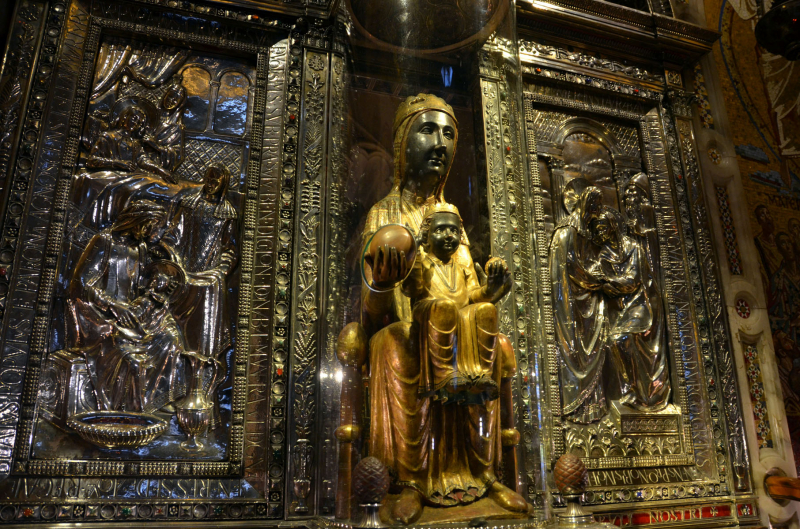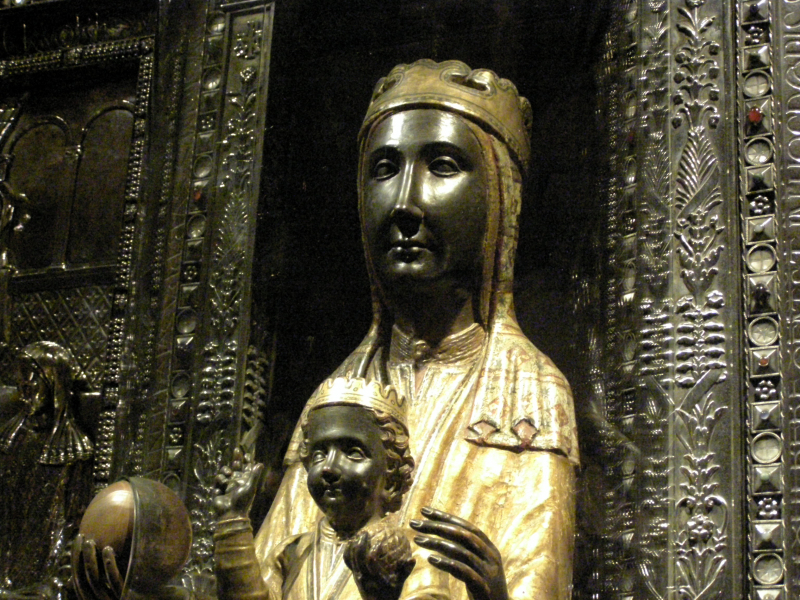The Virgin of Montserrat
The Virgin of Montserrat was allegedly concealed during Moorish conquests and later discovered by shepherds in 880 in Santa Cova de Montserrat, a mountain cave on Montserrat. As a result of its discovery, Montserrat became a pilgrimage destination as the Monastery of Santa Maria de Montserrat was founded.
A route built into the mountainside leads to Santa Cova's refuge, known as the Cam de la Santa Cova. It was constructed under the patronage of Gertrudis de Camporrell, Queen of Tamarit, between 1691 and 1704. From 1896 to 1916, a series of sculptures dedicated to the rosary and the 15 mysteries of the Virgin were installed along the Cam, including works by Antoni Gaud, Josep Puig I Cadafalch, and other neo-modernist artists.
According to legend, the image of the Mother of God was discovered in the Holy Cave. This is referenced for the first time in a manuscript dated 1239. According to legend, some shepherds witnessed the so-called "great light" falling from the sky on a Saturday towards sunset in the year 880. In the highlands, there is a "wonderful melody" that goes with the light. The shepherd children and their parents returned to the highlands with their parents on Saturday following the event. A second time, the vision appears. This pattneighbouring ern repeated again for the next four Saturdays. The princeneighboring Olesa was also present. The news reached Bishop Manresa, who was informed of the events. On a Saturday, he planned a trip to the mountains.
The chapel next door, "La Capilla de la Santa Cueva," is well worth a visit when visiting the Holy Grotto. The chapel was designed to give the impression of merging with the cave and becoming one with it. The chapel was built in the late seventeenth and early eighteenth centuries (1696–1705). Its architectural significance is due to its extremely high support walls. Because of the mountain's slope, they are required. It is critical to maintaining silence when entering and exiting the chapel. Inside the Chapel of the Holy Grotto, there is a smaller chapel that is fashioned like a cross and is supported by a rock mass in the mountain.
The beauty of Santa Cova de Montserrat is more beautiful than ever when it is located on a cliff. That is the natural beauty of the mountains and the lush green of the trees that add to the beauty of Santa Cova de Montserrat. That beauty is even more sacred when Santa Cova de Montserrat is a place of pilgrimage for people here. What could be better when Santa Cova de Montserrat is both a sacred place and the third most beautiful historical site in Santa Cova de Montserrat.
Location: the Santa Maria de Montserrat monastery on the Montserrat Mountain in Catalonia, Spain







